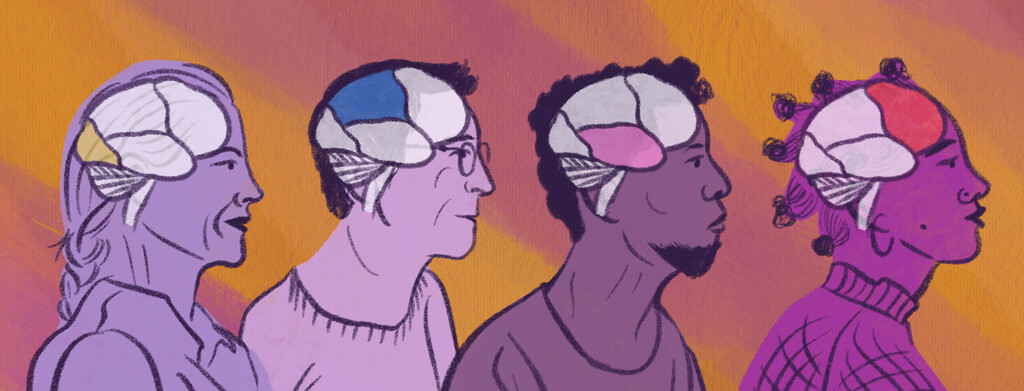Where in My Brain Is a Seizure Happening?
Epilepsy causes a burst of electrical brain activity that causes a range of physical and mental health issues. Symptoms can be mild or serious, and may affect movement, what you see, feel, and more.
A seizure’s impact all depends on where in the brain it strikes. Symptoms of epilepsy are a clue for doctors about where in your brain a seizure happened.
The human brain is made up of 2 halves, called hemispheres. Those right and left halves are each divided into 4 parts, called lobes. Each lobe controls different functions that make you who you are.1
Here is a look at each brain lobe and possible symptoms of a seizure.
Temporal lobe
The temporal lobe is found behind your ears and controls language comprehension, memory, and hearing.1
People living with epilepsy are most likely to have seizures in this part of the brain. They may start and end in the temporal lobe or affect other parts of the brain. Seizures can range from mild to serious, and symptoms include:2,3
- Smelling an unusual odor, such as burning rubber
- A strange sensation in your stomach or chest
- Fear or worry
- A feeling of déjà vu
- Loss of reality
- Repeated movements (automatisms)
- Staring
- Impaired awareness
Frontal lobe
Located just behind the forehead under your skull bone, the frontal lobe manages your:1
- Character traits
- Actions
- Feelings
- Decision-making
- Planning
- Problem-solving
- Body motions
- Intellect
- Focus
- Self-awareness
Epilepsy in this part of the brain is the second most common kind. Seizures are short-lived (30 seconds or less) and usually happen at night when you are asleep. They could wake you up and cause you to flail about and move your arms and legs in a cycling motion.2,3
It may be hard for a doctor to pinpoint which part of the brain a seizure has affected. That is because the frontal and temporal lobes are closely linked.3
Parietal lobe
You will find the parietal lobe behind the frontal lobe near the center of the brain. It is responsible for:
- The way you use words to express ideas and feelings
- Decoding the signals from your senses of touch, sight, and hearing
- Perceiving space and distance
Epilepsy in the parietal lobe is unusual. But if it happens, a seizure will disrupt your senses and you could feel:3
- Heat
- Lack of physical sensation (numbness)
- Electric sensation
- Weakness
- Dizziness
- Things that are not real (hallucinations)
- Space distortions
Occipital lobe
This lobe is located at the back of the brain and processes what you see with your eyes.1
An occipital seizure is rare, making up just 5 out of 100 seizures caused by epilepsy. This type of seizure may start with a disruption in your vision like flickering or colored lights. When a seizure happens on the left occipital lobe, you will notice visual changes in your right eye. The opposite happens with the right occipital lobe.3
An occipital seizure could also feel a lot like a migraine. You may:2
- Feel sick to your stomach
- Throw up
- Have a headache
- Have partial vision loss
- Have visual symptoms
Symptoms give your doctor clues about where seizures are happening, and whether your seizures are generalized or focal.
Generalized epilepsy is caused by abnormal electrical activity on both sides of the brain at the same time. Focal epilepsy is caused by abnormal electrical activity in only 1 part of the brain. People also have seizures that start in one lobe and spread to other lobes. These are called focal-to-bilateral seizures.4

Join the conversation